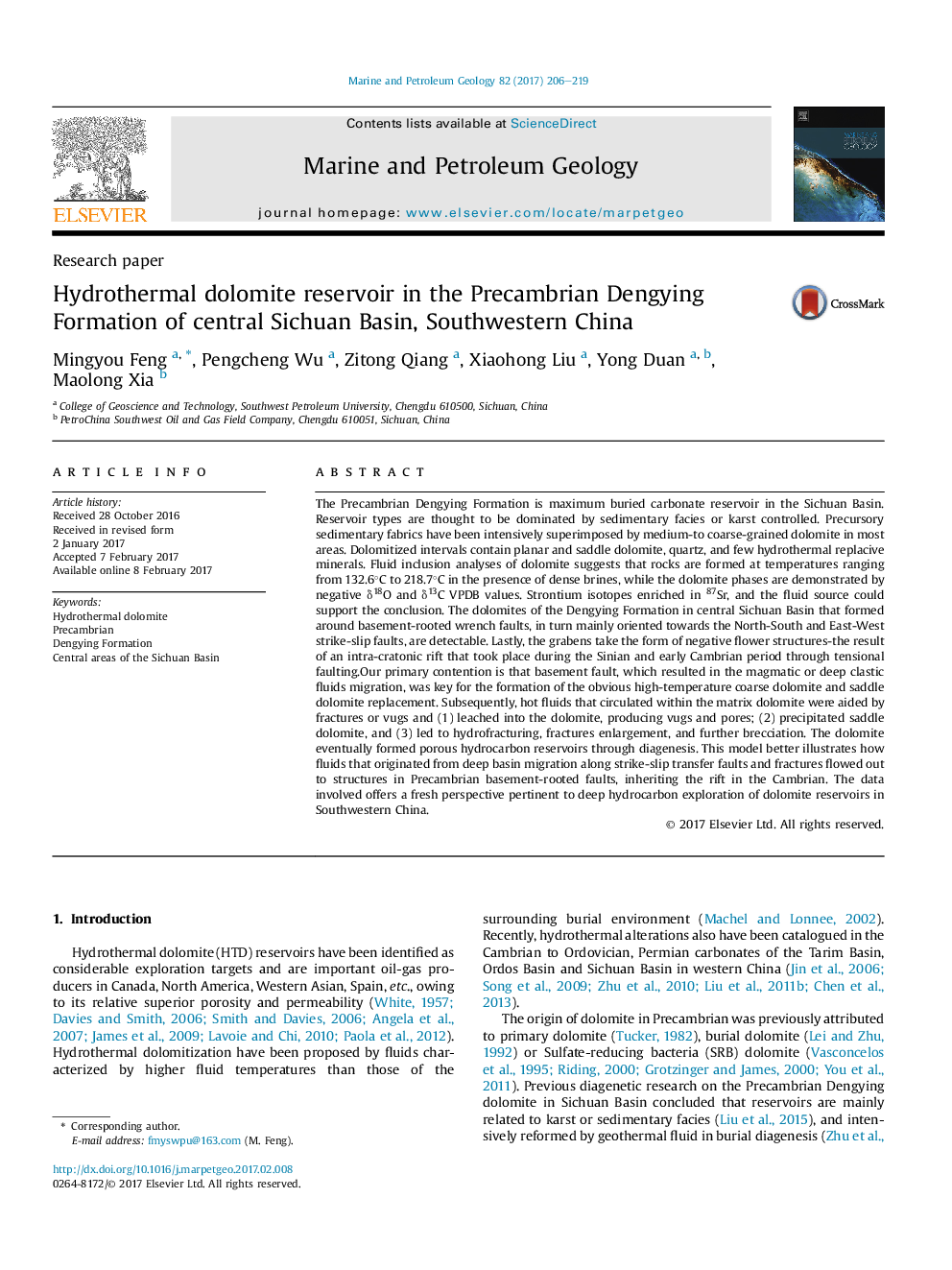| کد مقاله | کد نشریه | سال انتشار | مقاله انگلیسی | نسخه تمام متن |
|---|---|---|---|---|
| 5782105 | 1637145 | 2017 | 14 صفحه PDF | دانلود رایگان |
عنوان انگلیسی مقاله ISI
Hydrothermal dolomite reservoir in the Precambrian Dengying Formation of central Sichuan Basin, Southwestern China
دانلود مقاله + سفارش ترجمه
دانلود مقاله ISI انگلیسی
رایگان برای ایرانیان
موضوعات مرتبط
مهندسی و علوم پایه
علوم زمین و سیارات
زمین شناسی اقتصادی
پیش نمایش صفحه اول مقاله

چکیده انگلیسی
The Precambrian Dengying Formation is maximum buried carbonate reservoir in the Sichuan Basin. Reservoir types are thought to be dominated by sedimentary facies or karst controlled. Precursory sedimentary fabrics have been intensively superimposed by medium-to coarse-grained dolomite in most areas. Dolomitized intervals contain planar and saddle dolomite, quartz, and few hydrothermal replacive minerals. Fluid inclusion analyses of dolomite suggests that rocks are formed at temperatures ranging from 132.6°C to 218.7°C in the presence of dense brines, while the dolomite phases are demonstrated by negative δ18O and δ13C VPDB values. Strontium isotopes enriched in 87Sr, and the fluid source could support the conclusion. The dolomites of the Dengying Formation in central Sichuan Basin that formed around basement-rooted wrench faults, in turn mainly oriented towards the North-South and East-West strike-slip faults, are detectable. Lastly, the grabens take the form of negative flower structures-the result of an intra-cratonic rift that took place during the Sinian and early Cambrian period through tensional faulting.Our primary contention is that basement fault, which resulted in the magmatic or deep clastic fluids migration, was key for the formation of the obvious high-temperature coarse dolomite and saddle dolomite replacement. Subsequently, hot fluids that circulated within the matrix dolomite were aided by fractures or vugs and (1) leached into the dolomite, producing vugs and pores; (2) precipitated saddle dolomite, and (3) led to hydrofracturing, fractures enlargement, and further brecciation. The dolomite eventually formed porous hydrocarbon reservoirs through diagenesis. This model better illustrates how fluids that originated from deep basin migration along strike-slip transfer faults and fractures flowed out to structures in Precambrian basement-rooted faults, inheriting the rift in the Cambrian. The data involved offers a fresh perspective pertinent to deep hydrocarbon exploration of dolomite reservoirs in Southwestern China.
ناشر
Database: Elsevier - ScienceDirect (ساینس دایرکت)
Journal: Marine and Petroleum Geology - Volume 82, April 2017, Pages 206-219
Journal: Marine and Petroleum Geology - Volume 82, April 2017, Pages 206-219
نویسندگان
Mingyou Feng, Pengcheng Wu, Zitong Qiang, Xiaohong Liu, Yong Duan, Maolong Xia,